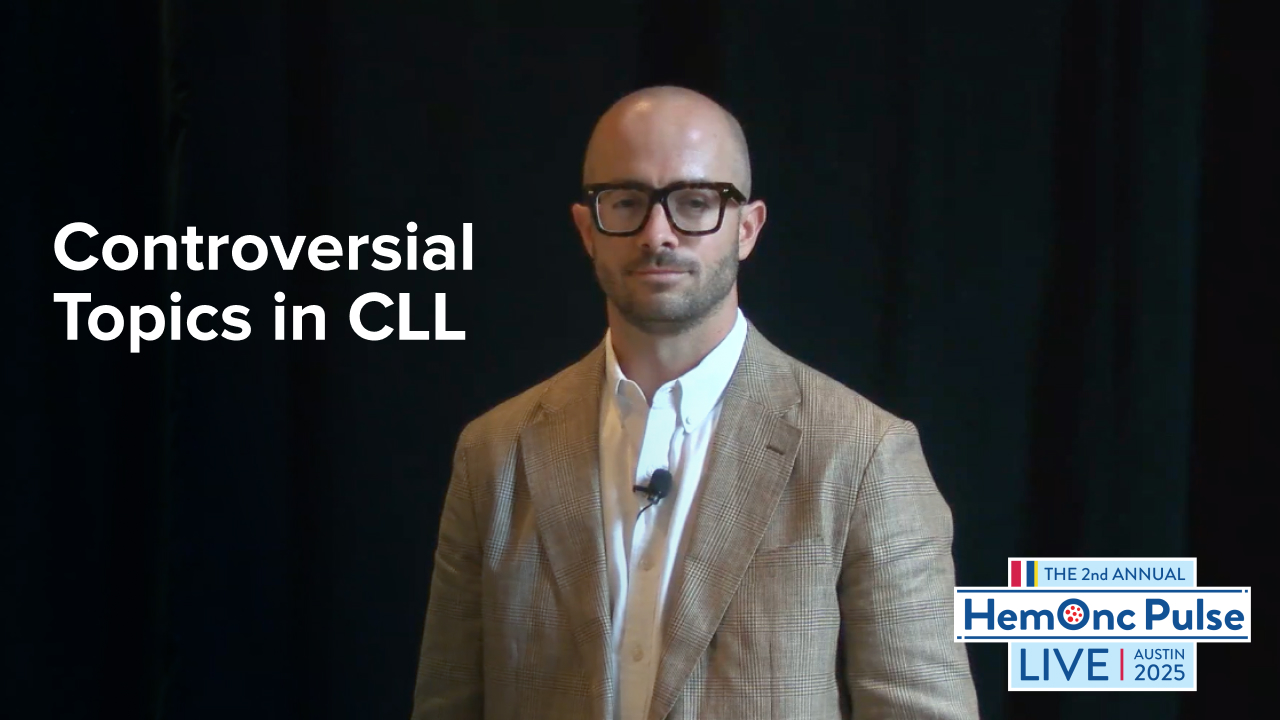When Should Clinicians Treat Myelofibrosis With Momelotinib?
By Ruben Mesa, MD, Naveen Pemmaraju, MD, Sanam Loghavi, MD, Olatoyosi Odenike, MD - Last Updated: June 7, 2024A roundtable discussion, moderated by Ruben Mesa, MD, of the Atrium Health Wake Forest Baptist Comprehensive Cancer Center, focused on the latest updates in myeloproliferative neoplasms (MPN). Dr. Mesa was joined by Naveen Pemmaraju, MD, of the University of Texas MD Anderson Cancer Center; Sanam Loghavi, MD, of the MD Anderson Cancer Center; and Olatoyosi Odenike, MD, of the University of Chicago Medicine.
In the sixth segment of the roundtable series, the panel discusses momelotinib and pacritinib treatment in myelofibrosis (MF).
—
Dr. Mesa: How are you using pacritinib? Are you administering it in the frontline or second-line setting?
Dr. Odenike: Ever since pacritinib was approved by the US Food and Drug Administration for patients with thrombocytopenia, I generally use it in that setting. When a patient has a platelet count of 20,000-25,000, a big spleen, symptoms, and needs Janus kinase (JAK) inhibition, it’s tough to reach for ruxolitinib or fedratinib. I’ve used pacritinib in the frontline setting in those individuals; it’s clearly less myelosuppressive.
Dr. Mesa: There are a range of potential reasons why some patients have cytopenias, such as drug effects or progressive disease. Do you repeat a bone marrow evaluation? Do you repeat next-generation sequencing? Do you look for other molecular markers? Do you look to see if there has been evolution toward myelodysplastic syndromes (MDS) or acute myeloid leukemia?
Dr. Loghavi: As patients progress through their disease, their hematopoietic reserve is depleted. They can’t make platelets or red blood cells. Progression of disease can also happen through genetics and clonal evolution. We never give a secondary diagnosis of MDS to a patient that has MPN; it’s always considered progression of disease. We will say, ‘there’s features of dysplasia in the bone marrow, and this may indicate that the disease is progressing,’ but we’ll never reclassify the patient as having an MDS/MPN. Any dramatic change in the patient’s blood counts should trigger a bone marrow evaluation again, because there’s often a reason— usually progression of disease—that can explain the patient’s cytopenias.
Dr. Mesa: Are there any other pacritinib toxicity issues on your radar?
Dr. Pemmaraju: Through the years, there has been some scrutiny of major adverse cardiac events and bleeding with pacritinib; however, I haven’t seen much of those in clinical practice. With fedratinib, momelotinib, and pacritinib, a main side effect is gastrointestinal (GI) issues. When you come into the real world with these JAK inhibitors, you have patients with Crohn’s disease and prior colon cancer. Interestingly, pacritinib has a signal of diarrhea in the first four to six weeks. When you prescribe pacritinib, it comes with Imodium.
The second issue is that you can have patients who are being treated at severely low platelets, which is less than 50,000. I watch for secondary events like thrombocytopenia, platelet transfusions, and bleeding, even if they’re not happening first.
Dr. Mesa: Let’s migrate to momelotinib, the most recently approved JAK inhibitor in September 2023. When do you choose momelotinib versus pacritinib?
Dr. Odenike: I am using momelotinib both [in] the frontline and second-line setting. Anemia drives my reaching for momelotinib. If a patient has MF and anemia, you look at it through a wide lens; you don’t naturally assume that the anemia is driven exclusively by the MF. If the patient hasn’t had a recent bone marrow evaluation, I will do that, especially if the dip in the counts is recent. I also do a comprehensive anemia work-up.
However, anemia will be driven by MF in many patients. If they are on anything myelosuppressive, I will discontinue that and reach for momelotinib, particularly if the hemoglobin is in the 8.5-9.0 range. This is a range in which if I reached for ruxolitinib as the first-line treatment, I might render that patient to start needing transfusions. I try to avoid adding a new burden on the patient, so that’s when I generally use momelotinib.






 © 2025 Mashup Media, LLC, a Formedics Property. All Rights Reserved.
© 2025 Mashup Media, LLC, a Formedics Property. All Rights Reserved.